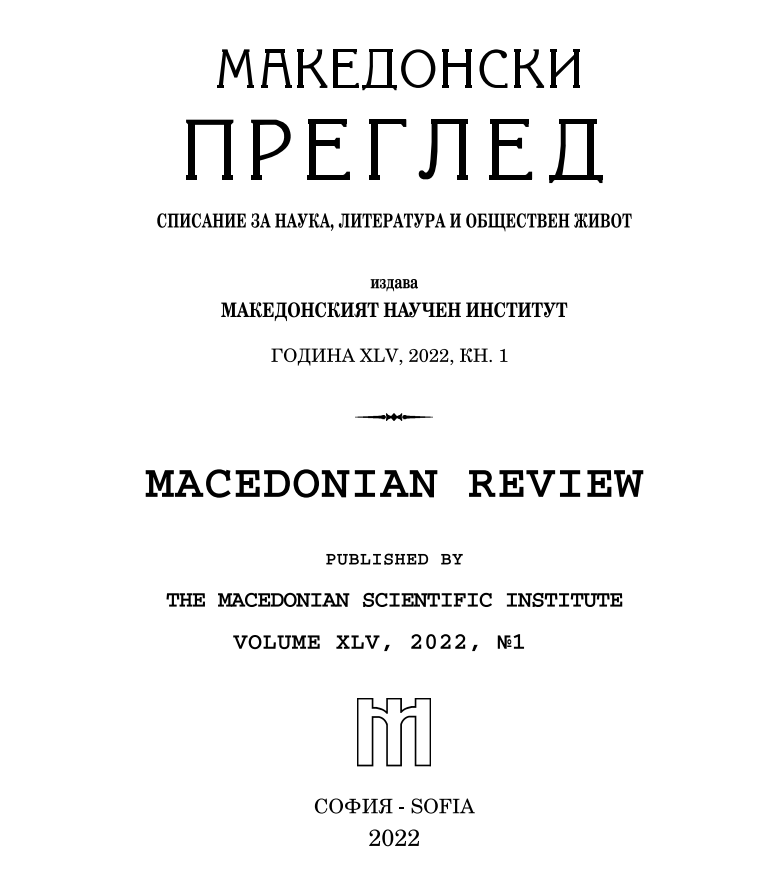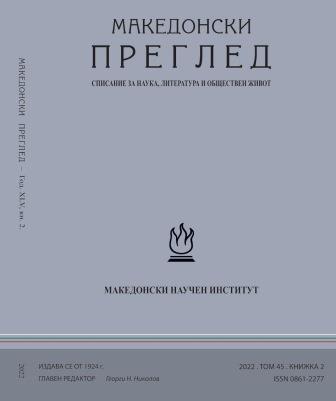
BOSNJAČKE FAMILIJE NASELJA SULICE U 19. STOLJEĆU
The process of the settlement Sulice modern Bosniak families origin and development is possible to observe, based on the available historical sources, only in 19th century. The main data sources were the male population census of Kaza Srebrenica from 1850151, and the first entries of owners in land registers of Srebrenica district in 1894. By comparing the data from the sources above, as well as from the population census of 1991, it was possible to establish continuity of settlement and development of Sulice families in this part of Srebrenica municipality. In the Sulice population census from 1850/51 the following last names are mentioned: Behramovic, Bejan, Bejanovic, Haskic, Hodiic, Huremovic, Kandietovic, Kumovic, Smajic, Spahic and Sulic. By the first entries in land registers of 1894 for the cadastral municipality of Sulice a large number of last names is stated, the most common of which are: Abdurahmanovic (Hadiihafizbegovic), Ademovic, Aljkanovic, Avdic, Bajramovic, Beganovic, Begic, Begovic, Bektic, Buric, Bumbulovic, Civic (Resic), Delic, Dudic, Diananovic, Dianic, Diinovic, Efendic, Focak, Friina, Gurda, Gurdic, Halilbasic, Hasanovic, Hasic, Haskic, Hodiic, Huseinovic, Husic, Ibisevic, Ibrahimovic, Idrizovic, Imsirovic, Jahic (Kadric), Junuzagic, Kadric, Kajmakovic, Kovacevic, Kulesa, Lemes, Lolic, Mahmutovic, Mandiic, Masic, Mehic, Mehmedovic, Mehmedovic (Silajdiic), Mehanovic, Meholjic (Mehanovic), Mesic, Mostarac (Dienetic), Muhic (Mujic), Music, Mustafic, Nuhanovic, Nukic, Nukic (Begovic), Okanovic, Omerovic, Osmanovic (Kavazovic), Osmanovic (Selimovic), Palalic, Pasagic, Pinjic (Cikaric), Pitarevic, Prijepoljac, Ramic, Rustanbegovic, Salihovic, Selmanagic, Selimovic, Sirucic (Salihovic), Smajlovic, Suljic, Sumbulovic, Sarvan, Secic, Sehic, Solic (Sulic), Spijodic, Tankovic, Tepic, Ustic, Uzunovic, Vranjkovina, Zildiic, Zimic, Zulo (Agicevic). Only those families who lived in the Sulice settlement in the second half of the 19th century have been researched in this paper. Those are the following families: Abdurahmanovics (Hadiihafizbegovic), Alics, Aljkanovics, Avdics, Bajramovics (Behramovic), Begovics, Bejans, Bejanovics, Bektics, Burics, Diinovics, Haskics, Hodiics, Huseinovics, Imsirovics, Kadrics, Kandietovics, Kulesas, Mehanovics (Kandietovic), Mujkics, Musics, Mustafics (Dervanovic), Mustafics (Spahic), Nuhanovics, Nukics, Osmanovics (Selimovic), Pejmanovics, Sahadiics, Selimovics (Huremovic), Selimovics (Kumovic), Smajlovics, Suljics (Smajic), Sarvans, Solics and Spijodics. Most male members who had been listed in 1850/51 census in the Sulice settlement had their descendants, either male or female, who continued their family, i.e. genetic lineage, thus preserving their family and genetic heritage. Some families, such as Alics, Abdurahmanovics, Haskics, Kadrics, Kandietovics, Mehanovics, Nuhanovics, Selimovics, etc. were more numerous than others, due to either greater natural increase or less emigration outside the Sulice settlement. However, it was not possible to research the impact of migration on the overall Sulice population growth because it was not a part of the official policy of neither Ottoman nor Austro-Hungarian Empire. On the contrary, the Austro-Hungarian Monarchy made an effort to minimize the extent of Muslim emigration from Bosnia and Herzegovina in the period from 1879 to 1918 because this did not work in its favour considering the commitments it had made during the Berlin Congress in 1878. It is important to note that most male members of the Sulice settlement families, who had been listed in 1850/51 census, took their family name (last name) at the end of the 19th century or at the beginning of the 20th century because it was mandatory during the Austro-Hungarian occupation of Bosnia and Herzegovina, while during the Ottoman Empire rule it was not. The phenomenon of formation of family names (last names) for the wider area of the Osat region was not specifically researched, thus not in this paper either, because the topic of this paper has been to research the process of formation of the individual families in the Sulice settlement in the second half of the 19th century. Based on this this process it is possible to notice that most families, who have a common ancestor, kept their common family name, i.e. last name.
More...


